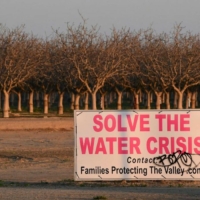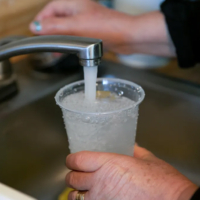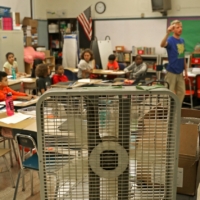UCLA to Conduct First-of-Its-Kind Analysis for Drinking Water in California $3 million contract from the state will help reveal water system risks and solutions
By Colleen Callahan
California is the only state to legally recognize a human right to safe, clean, affordable and accessible water. But this right is not yet a reality in all communities. About 400 water systems in California are currently known to be noncompliant, with many others suspected of being at high risk of violating quality or affordability standards.
Through a $3 million contract with the California State Water Resources Board, the UCLA Luskin Center for Innovation (LCI) will conduct a statewide drinking water needs analysis to identify risks and solutions for water systems and private wells throughout the state.
LCI, which unites UCLA scholars and civic leaders to solve environmental challenges, will analyze the technical, managerial and financial capacity of hundreds of systems that provide drinking water to Californians, which has never been done comprehensively before. The center will start with the state’s existing database of noncompliant water systems and will also identify systems at risk of future violations.
“About 90% of California’s public water system violations occur in systems serving less than 500 service connections, underscoring the inherent risk of small size and lack of capacity,” said Gregory Pierce, associate director of the Luskin Center for Innovation and lead researcher on the analysis.
The center will develop a method for assessing different types of drinking water risks, then evaluate solutions for those risks. Recommendations will be tailored for each water system and private well in violation or at risk of violation. Interventions could include:
- Using enhanced treatment technologies.
- Consolidating with a system that has more capacity.
- Providing emergency water during an interim period.
In addition, the center will analyze the costs of interim and long-term strategies, identify the appropriate funding source and determine whether additional funding is needed.
Recognizing that advancing the human right to water must be a collaboration, the LuskinCenter for Innovation will partner with several entities to conduct the analysis. Subcontractors include the University of North Carolina’s Environmental Finance Center, Corona Environmental Consulting, Cal State Sacramento’s Office of Water Programs and the nonprofit Pacific Institute. The work is expected to conclude in 2021.
“This work recognizes that California needs to further address the drinking water quality and affordability issues faced by a number of small and medium-sized water systems and private well owners in a more strategic and better-funded way,” Pierce said.
This year, Gov. Gavin Newsom signed into law Senate Bill 200, which established the Safe and Affordable Drinking Water Fund to help finance the effort to bring adequate water supplies to disadvantaged communities.
The LCI analysis will help inform the spending plan for SB 200 and other associated funding streams by prioritizing which water systems and wells get funding and determining the best solutions for each community.
For the smallest systems, water safety is a primary concern; for larger systems, the center will focus on affordability. LCI’s previous research identified wide disparities in the cost of water. In Los Angeles County, different rates charged by water providers can lead to average annual water bills that are up to $2,000 higher in some households.
In the years since California enshrined a human right to water in 2012, LCI has supported its implementation. This work includes the design of a statewide water rate assistance program for low-income households, as required by Assembly Bill 401, which then-Gov. Jerry Brown signed in 2015. The center’s report will be released later this year.
In another example of support for sustainable water systems in L.A. County, JR DeShazo, director of the Luskin Center for Innovation, is serving on an oversight committee for Measure W, which will raise hundreds of millions of dollars in property taxes to capture and treat stormwater runoff.








Leave a Reply
Want to join the discussion?Feel free to contribute!